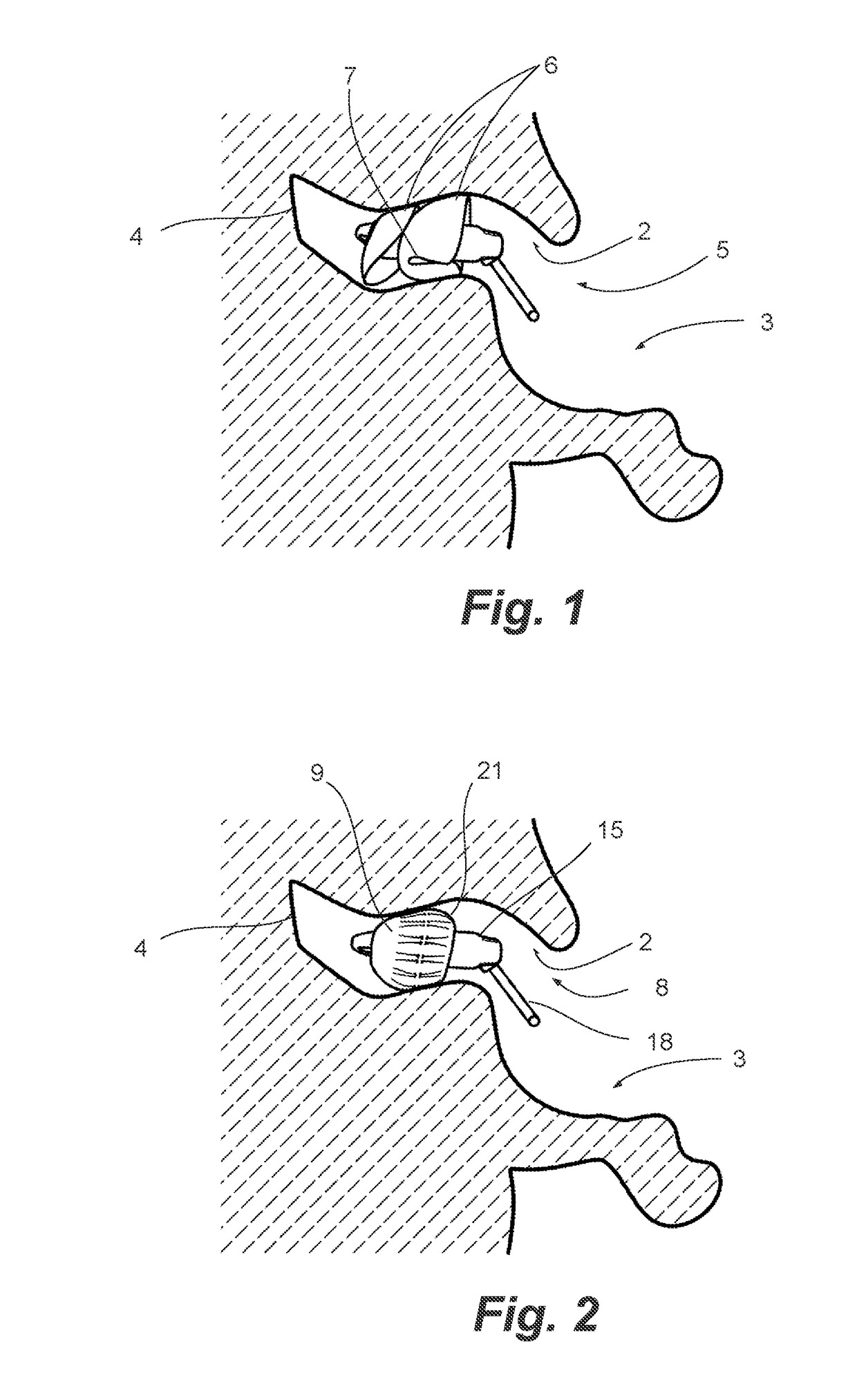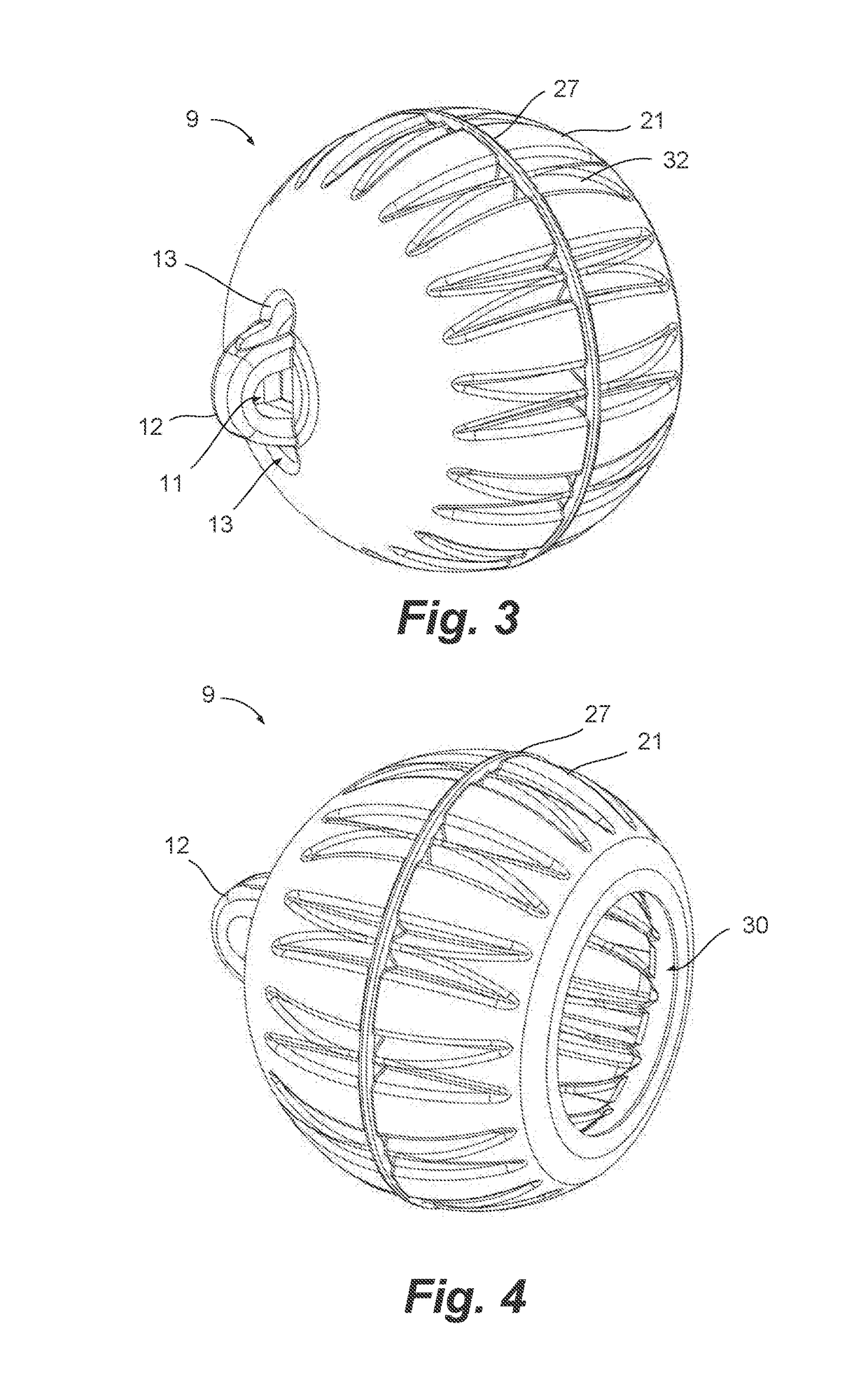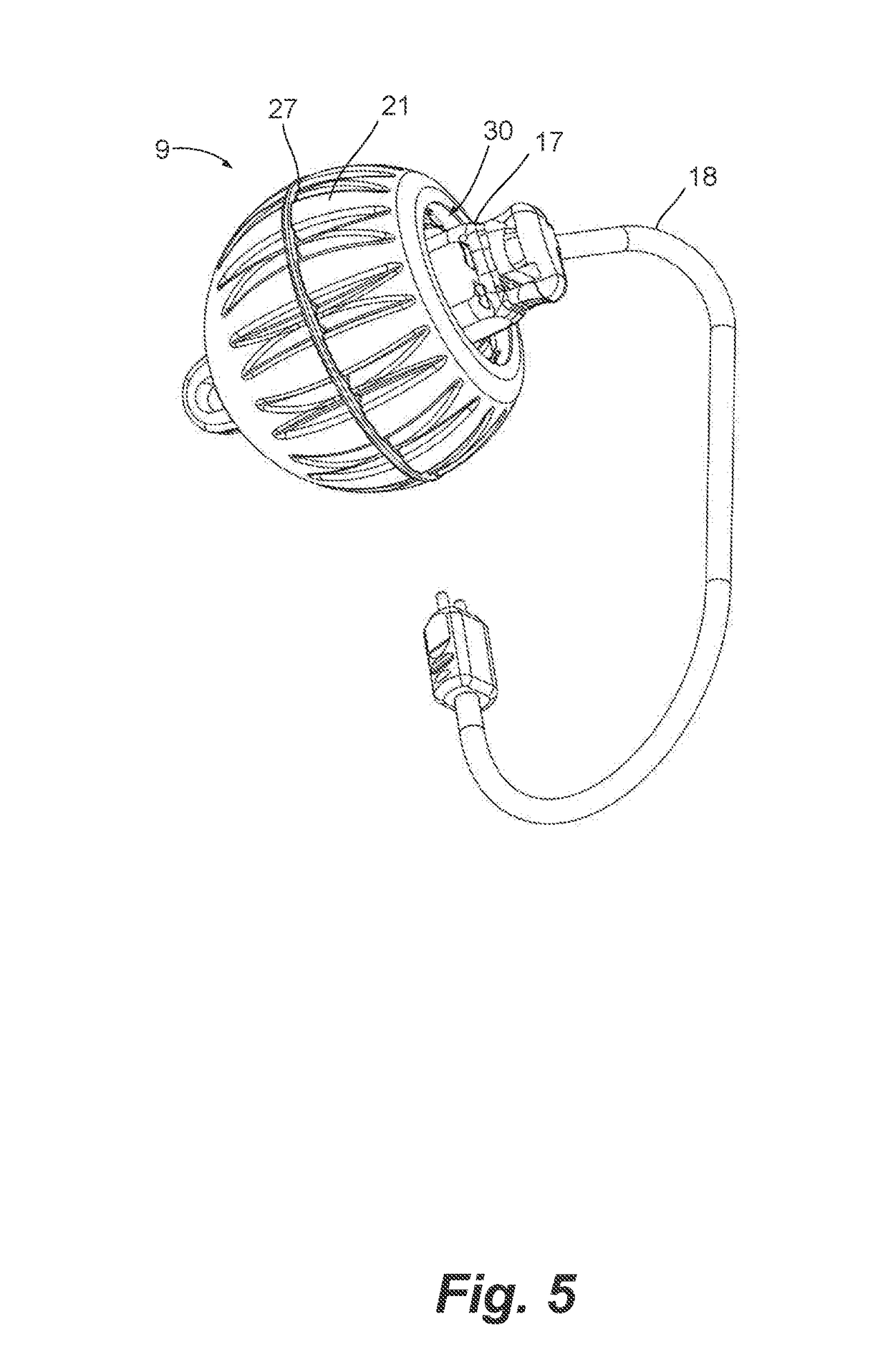Flexible ear tip for a hearing aid
a hearing aid and flexible technology, applied in the field of hearing aids, can solve the problems of wide variability in size and shape among individuals, custom fitting ear plugs may not solve all problems, and require a more complicated process, so as to achieve the effect of reducing compression in the lateral zone, ensuring the acoustic insulation of the earpiece, and ensuring the acoustic insulation
- Summary
- Abstract
- Description
- Claims
- Application Information
AI Technical Summary
Benefits of technology
Problems solved by technology
Method used
Image
Examples
Embodiment Construction
[0049]Reference is first made to FIG. 1, which illustrates a horizontal section of part of a human head, through an ear canal and with an ear piece 5 according to a generic prior art. The ear piece illustrated comprises a core with two annular cones 6. The ear canal 2 has an S-shape between the outer ear 3 and the tympanic membrane 4. FIG. 1 illustrates a situation where a bend in the S-shape causes the inner shroud to be pressed hard against one side of the ear canal while leaving a lack of contact to the ear canal wall to the other side. The outer shroud is compressed so much that the cone folds, at 7. A pressure point, perhaps at an edge of a cone, is likely to cause discomfort to the user, e.g. during chewing. A lack of contact pressure or a fold is likely to create a leak.
[0050]Ear canals come in many sizes and shapes. It is standard practice to supply instant-fit ear piece in a selection of sizes. Fits may end up differently; however, and the inventors have found that problems...
PUM
 Login to View More
Login to View More Abstract
Description
Claims
Application Information
 Login to View More
Login to View More - R&D
- Intellectual Property
- Life Sciences
- Materials
- Tech Scout
- Unparalleled Data Quality
- Higher Quality Content
- 60% Fewer Hallucinations
Browse by: Latest US Patents, China's latest patents, Technical Efficacy Thesaurus, Application Domain, Technology Topic, Popular Technical Reports.
© 2025 PatSnap. All rights reserved.Legal|Privacy policy|Modern Slavery Act Transparency Statement|Sitemap|About US| Contact US: help@patsnap.com



